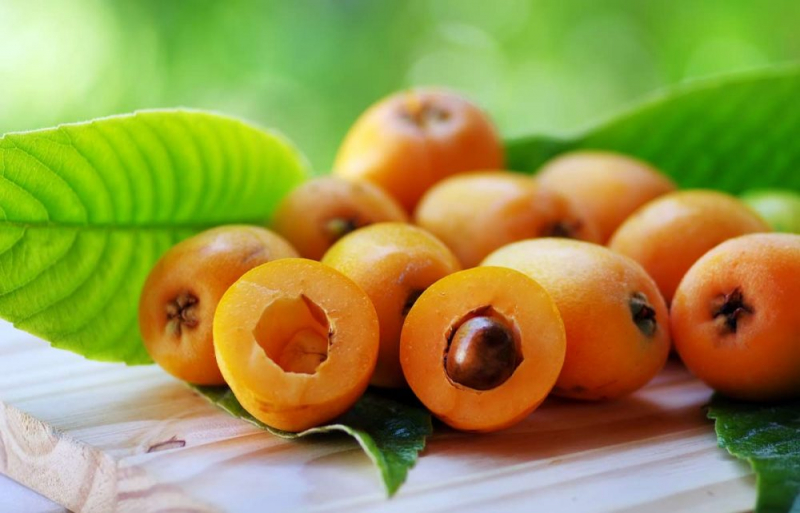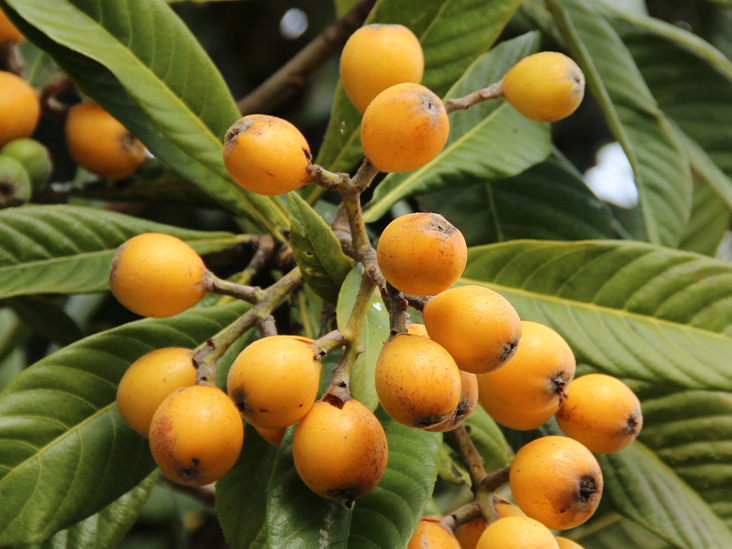Loquat
The loquat (Eriobotrya japonica) is a large evergreen shrub or tree, grown commercially for its orange fruit and for its leaves, which are used to make herbal tea. It is also cultivated as an ornamental plant. The tree can reach a height of 5–10 meters, however, it typically grows to be just 3–4 meters tall. Depending on the local temperature, the fruit starts to ripen in the spring through summer. The leaves are thickly velvety-hairy below and thick yellow-brown pubescence on the upper surface; the young leaves are also densely pubescent above, but this soon rubs off. The leaves are alternate, simple, 10-25 centimeters long, dark green, tough, and leathery in texture, with a serrated margin. The loquat is low in sodium and high in vitamin A, vitamin B6, dietary fiber, potassium, and manganese.
Initially, loquat originated in China more than a thousand years ago. Chinese started using this fruit in the Tang Dynasty. And Chinese immigrants brought this fruit to Guatemala, Hawaii, California, and American countries. Guatemalans love the taste of loquat or nispero in many delicious recipes. To express their love for this fruit, Guatemalans held the Festival de Nispero annually at San Juan del Obispo. In Guatemala, people prefer consuming raw loquat or making salads from this fruit. Sometimes, you can find the taste of loquat in jams, chutneys, pies, and other desserts.







